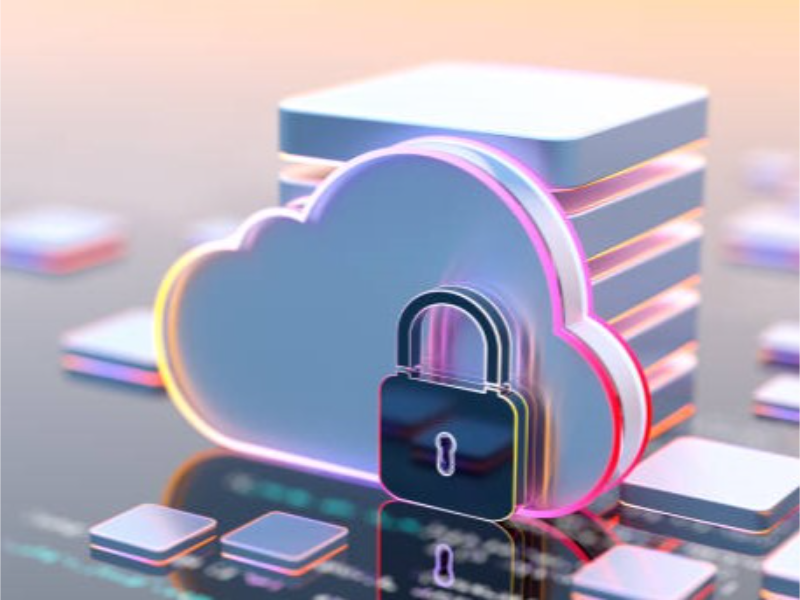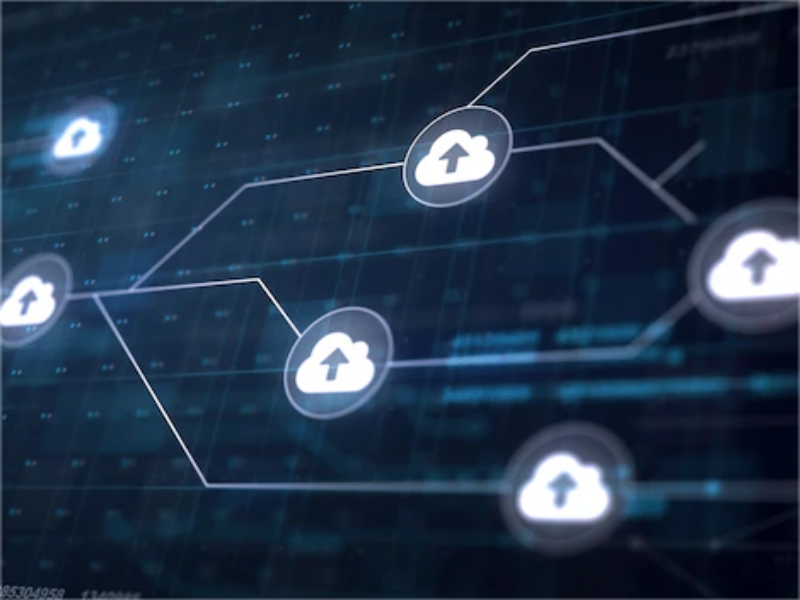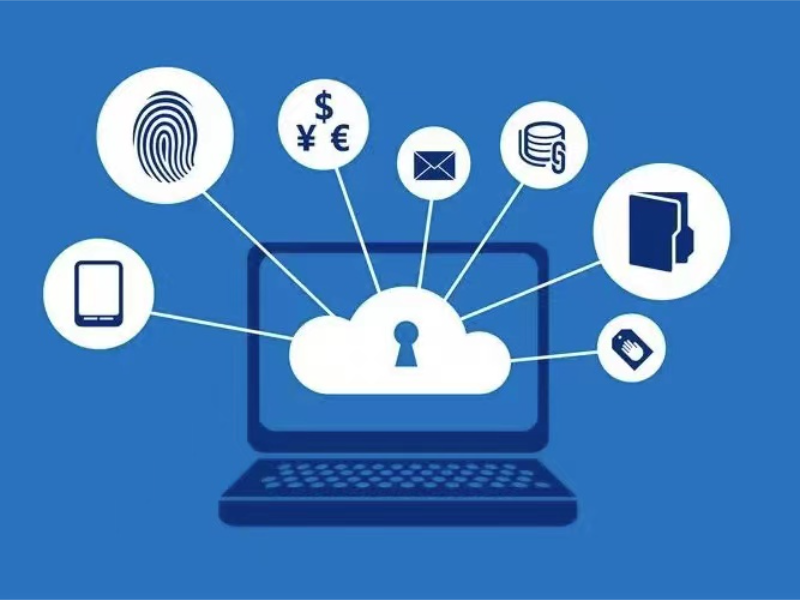- Cloud security involves practices and technologies that protect data, applications, and infrastructure in cloud environments, ensuring confidentiality and business continuity
- The key components of cloud security include identity and access management, encryption, multi-factor authentication, and threat detection, all of which protect sensitive data from cyber threats
Cloud security is a collection of measures and strategies designed to protect data, applications, and infrastructure in cloud environments. As businesses increasingly adopt cloud computing to improve efficiency and scalability, securing cloud-based assets has become critical. This article explores the concept of cloud security, its importance, common challenges, and best practices to safeguard your cloud environment.

Also read: Mastering cloud security: 5 CWPP best practices
Also read: Decoding CWPPs: The key to cloud security mastery
What is cloud security?
Cloud security refers to the set of practices, technologies, and strategies designed to protect data, applications, and infrastructure within cloud computing environments. As businesses continue to shift their operations to the cloud for its scalability, flexibility, and cost-effectiveness, ensuring the security of cloud-based systems has become increasingly critical. It encompasses a wide range of protections, including data encryption, identity and access management (IAM), threat detection, and compliance with regulatory standards.

A key aspect of cloud security is the shared responsibility model. According to Gartner, “by 2025, 99% of cloud security failures will be the customer’s fault,” emphasizing that while cloud service providers (CSPs) offer security features, customers are still responsible for managing their data security. This highlights the importance of understanding the responsibilities involved in maintaining security in a cloud environment, as it’s not solely the responsibility of the cloud provider.
Furthermore, Bruce Schneier, a renowned cryptographer, stated, “Encryption works. Properly implemented strong encryption is one of the few things that you can rely on.” This reinforces the significance of encryption as a fundamental element of cloud security, ensuring that even if cybercriminals gain access to cloud systems, they are unable to read or use the data without proper decryption keys.
Encryption works. Properly implemented strong encryption is one of the few things that you can rely on.
Bruce Schneier, a renowned cryptographer
Also read: Understanding CASBs: Essential tools for cloud security
Why is cloud security important?
Cloud security plays a crucial role in safeguarding sensitive data and ensuring the continued operation of businesses in the face of potential cyber threats. As organizations increasingly store and process sensitive information in the cloud, securing these assets is not just important—it’s essential.

Protection of sensitive data
Data stored in the cloud is often sensitive, such as personal information, financial records, intellectual property, and business strategies. If compromised, the consequences can range from reputational damage to financial losses. According to the Ponemon Institute’s 2023 Cost of a Data Breach Report, the average cost of a data breach was $4.45 million, with cloud breaches representing a significant portion of these costs. As cybersecurity expert Brian Krebs puts it, “Cloud computing may offer flexibility, but it also offers hackers a wide range of opportunities to infiltrate a company’s data.” This underscores the importance of ensuring strong security measures are in place to protect cloud-based data from malicious actors.
Regulatory compliance
Many industries are subject to strict regulations regarding how they store, access, and process data. The General Data Protection Regulation (GDPR) in the EU and the Health Insurance Portability and Accountability Act (HIPAA) in the U.S. are examples of regulations that demand a high standard of data protection, especially for cloud-based data. Failure to meet these regulatory standards can result in severe financial penalties, as well as damage to an organization’s reputation. As Chris Hogan, CEO of the Cloud Security Alliance, notes, “Organizations must prioritize security and compliance to avoid costly fines and safeguard consumer trust in an increasingly data-driven world.”
Business continuity
Downtime caused by a security incident can halt business operations and lead to loss of revenue and customer trust. Cloud security is critical for ensuring that cloud-based systems remain operational even during a security breach or disaster. Cloud providers, such as Amazon Web Services (AWS) and Microsoft Azure, offer built-in resilience and backup systems to minimize the impact of such incidents, ensuring business continuity and reducing the likelihood of significant disruptions. As Michael J. Kavis, VP of Cloud Strategy at Deloitte, emphasizes, “The cloud offers not only cost savings but also built-in resilience to keep business operations running smoothly, even in the event of a breach.”
The cloud offers not only cost savings but also built-in resilience to keep business operations running smoothly, even in the event of a breach.
Michael J. Kavis, VP of Cloud Strategy at Deloitte
Key components of cloud security

Cloud security is a complex field that incorporates a variety of strategies to protect cloud environments. Below are the most crucial components that make up a comprehensive cloud security strategy.
1. Identity and access management (IAM)
IAM systems are designed to control who has access to cloud resources and ensure that only authorized users can interact with sensitive data. IAM tools allow businesses to manage user permissions, authentication, and access control, mitigating the risks of unauthorized access or data breaches. As cybersecurity expert Dave Hatter points out, “The foundation of cloud security is the principle of least privilege—only the people who need access should have it.”
IAM also plays a role in compliance, as many regulations require organizations to manage access in a specific manner. Tools like AWS IAM, Okta, and Microsoft Azure Active Directory are commonly used to manage cloud identities and control user permissions.
2. Data encryption
Encryption is a core method for ensuring data privacy and protection. Encryption transforms data into an unreadable format, which can only be decrypted by authorized users with the appropriate key. For example, AWS offers encryption for data at rest and in transit, ensuring that sensitive information remains protected even if intercepted.

As Bruce Schneier, a renowned cryptographer, has stated, “Encryption works. Properly implemented strong encryption is one of the few things that you can rely on.” In the context of cloud security, encryption provides a strong safeguard against unauthorized access, reducing the risks associated with data breaches.
3. Multi-factor authentication (MFA)
Multi-Factor Authentication (MFA) is a security measure that requires users to provide multiple forms of identification before they can access cloud-based systems. This could include a password, a one-time PIN, or biometric data like a fingerprint or facial recognition. MFA significantly enhances security by making it more difficult for cybercriminals to gain unauthorized access, even if they have a user’s login credentials.
Google reported that enabling MFA on Gmail accounts blocks 99% of automated attacks, highlighting the effectiveness of this simple yet powerful security measure.
4. Threat detection and monitoring
Continuous monitoring and threat detection are essential for identifying vulnerabilities in real time. Security tools powered by artificial intelligence and machine learning, such as AWS GuardDuty and Azure Security Center, help organizations proactively identify suspicious behavior and respond to threats before they escalate. These tools continuously analyze patterns and detect anomalies that could indicate a potential attack.
Brian Krebs, a well-known cybersecurity journalist, emphasizes, “The best defense is a good offense,” highlighting the importance of proactive monitoring in preventing security incidents before they happen.
The foundation of cloud security is the principle of least privilege—only the people who need access should have it.
Dave Hatter, a cybersecurity expert
Pop quiz
What is the primary goal of cloud security?
A. To reduce cloud service costs
B. To manage the physical servers used by cloud providers
C. To protect data, applications, and infrastructure in the cloud
D. To eliminate the need for compliance with regulations
(The correct answer is at the bottom of the article)
Common cloud security threats

While cloud security offers numerous benefits, it also faces various threats. Below are some of the most common cloud security risks that organizations must be aware of:
1. Data breaches
A data breach occurs when unauthorized individuals gain access to sensitive information stored in the cloud. Data breaches are often caused by weak access controls, poor encryption practices, or misconfigurations of cloud services. The Capital One breach in 2019, caused by a misconfigured AWS instance, exposed the personal data of over 100 million customers. According to Verizon’s 2023 Data Breach Investigations Report, data breaches involving cloud assets account for a significant portion of all security incidents.
2. Misconfiguration
Misconfigurations are one of the leading causes of cloud security breaches. These occur when cloud environments or services are set up incorrectly, leaving them open to exploitation. For example, leaving an AWS S3 bucket publicly accessible can expose sensitive data to unauthorized users. A report from IBM’s X-Force found that 15% of all cloud breaches were due to misconfigurations.
3. Insider threats
Insider threats occur when employees or contractors with access to cloud systems misuse their privileges. These threats can be malicious, such as intentionally stealing data, or unintentional, such as human error. A study by the Cybersecurity Insiders found that 57% of organizations have experienced insider threats related to their cloud environments.
4. Ransomware attacks
Ransomware is a type of malware that encrypts an organization’s files and demands payment in exchange for the decryption key. Cloud systems are increasingly targeted by ransomware attacks, as cybercriminals look to capitalize on vulnerabilities in cloud configurations or mismanaged access controls. According to Sophos, 66% of organizations reported experiencing a ransomware attack in 2023.
Best practices for cloud security

To mitigate cloud security risks, organizations must implement best practices that help protect data and maintain the integrity of cloud services. Below are some of the top best practices for ensuring strong cloud security.
1. Implement a zero-trust model
A zero-trust security model assumes that no one, whether inside or outside the organization, can be trusted by default. Instead, every request for access must be verified and authenticated. As Steve Turner, senior analyst at Forrester, states, “Zero trust isn’t just a technology; it’s a mindset that fundamentally changes how organizations approach security.” This model is especially important in cloud environments, where users and devices can be geographically distributed and potentially compromised.
2. Regularly review and update cloud configurations
Organizations should regularly audit their cloud configurations to ensure they follow best practices and are not vulnerable to attacks. Cloud providers often release updates and security patches, so staying up to date with these changes is essential. For example, AWS and Azure provide tools like AWS Config and Azure Policy that allow organizations to manage and audit cloud configurations effectively.
3. Backup and disaster recovery
Having a robust backup and disaster recovery plan in place is crucial for mitigating the impact of security incidents, including ransomware attacks. Cloud providers offer automated backup solutions, allowing businesses to restore their data quickly in the event of a breach. The Veeam Data Protection Report 2023 reveals that organizations with a reliable backup plan can recover 90% faster from ransomware attacks.
4. Train employees on cloud security
Employees are often the weakest link in the security chain, with human error causing a significant percentage of breaches. Regular security training programs and awareness campaigns can help employees recognize phishing attempts, avoid risky behaviors, and understand the importance of strong passwords and MFA.
Zero trust isn’t just a technology; it’s a mindset that fundamentally changes how organizations approach security.
Steve Turner, senior analyst at Forrester
Emerging trends in cloud security

The cloud security landscape is constantly evolving as new threats emerge and new technologies are developed. Here are some of the key trends shaping the future of cloud security.
1. Artificial intelligence and machine learning
AI and machine learning are being integrated into cloud security tools to help automate threat detection and response. These technologies allow security systems to identify and react to potential threats more quickly and accurately than traditional methods.
2. Secure access service edge (SASE)
Secure Access Service Edge (SASE) is an emerging architecture that combines cloud-native security functions such as firewall-as-a-service, secure web gateways, and zero-trust network access into a unified solution. By combining security and networking, SASE helps organizations secure remote workers and distributed cloud environments more efficiently.
3. Cloud security posture management (CSPM)
Cloud Security Posture Management (CSPM) tools help organizations continuously monitor and enforce security policies in cloud environments. These tools automatically detect and remediate misconfigurations, reducing the risk of breaches.
FAQ
Cloud security refers to the technologies, policies, and best practices designed to protect data, applications, and infrastructure in cloud computing environments from threats such as breaches, data theft, and unauthorized access.
Cloud security is vital for safeguarding sensitive data, ensuring regulatory compliance, maintaining business continuity, and protecting against evolving cyber threats that target cloud environments.
Key components include identity and access management (IAM), data encryption, firewalls, multi-factor authentication (MFA), and threat detection systems. These work together to create a secure cloud environment.
Cloud security is a shared responsibility between the cloud service provider (CSP) and the customer. While CSPs ensure the security of the cloud infrastructure, customers are responsible for securing their data, applications, and access controls.
Businesses can improve their cloud security by implementing strong encryption, using multi-factor authentication, regularly updating software, monitoring for threats, and training employees on best practices for secure cloud usage.
Quiz answer
C. To protect data, applications, and infrastructure in the cloud

